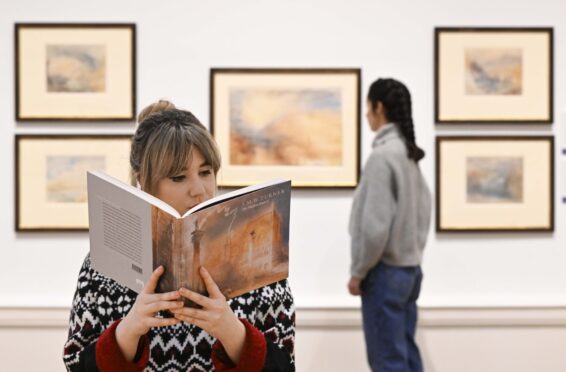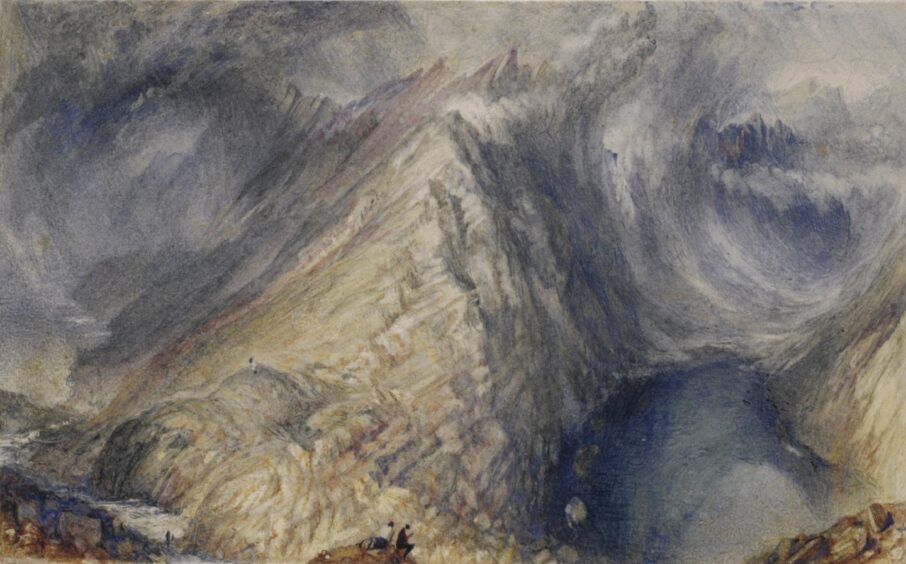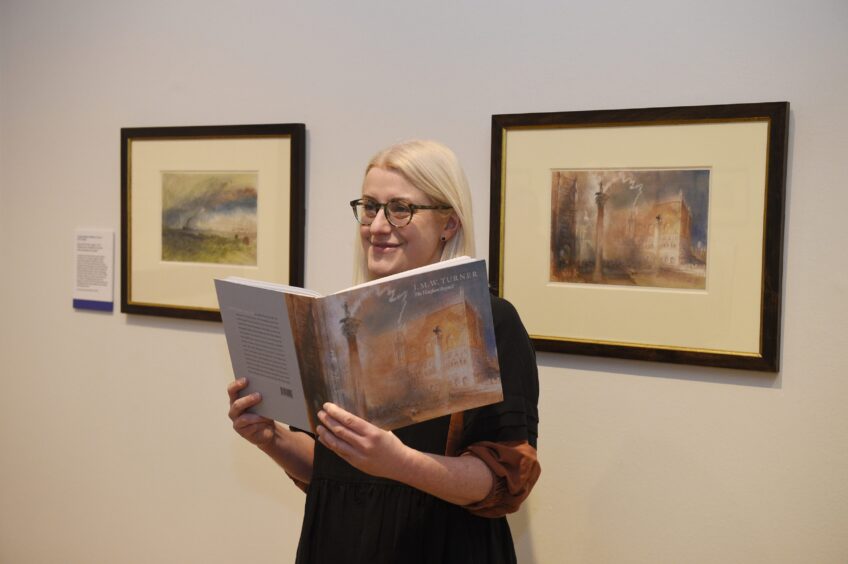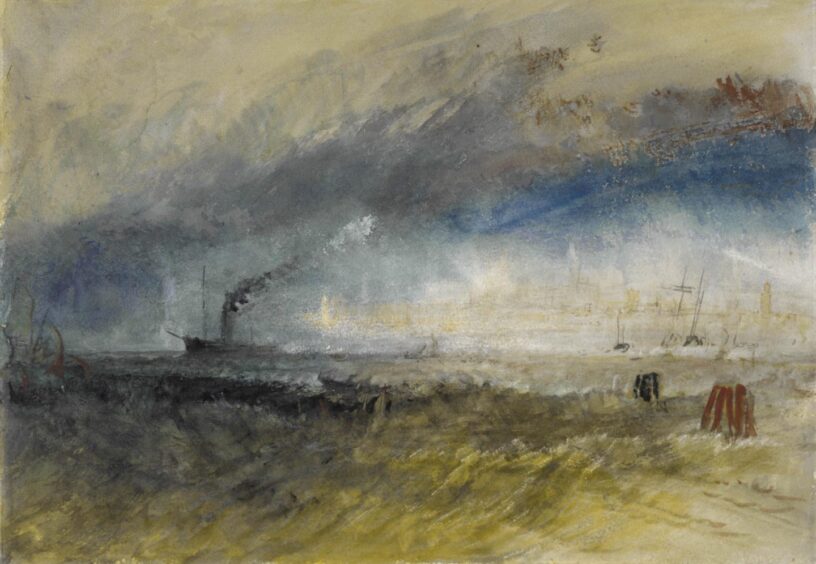
In an annual tradition stretching back over a century, every year the colours of the Turner In January exhibition help brighten the dark days of an Edinburgh winter.
For the first time, though, visitors will now also be able to gain fresh insight into the 19th Century works of painter Joseph Mallord William Turner in a new audio guide.
The collection of watercolours, left to the nation by Victorian art collector Henry Vaughan in 1900, will be complemented by the Smartify app, which provides a highlighted guided tour expanding beyond the gallery walls.
“Not everybody wants to experience an exhibition in the same way,” said Charlotte Topsfield, National Galleries of Scotland’s Senior Curator of British Drawings and Prints.
“Some people prefer to listen rather than to read, so it is really exciting and we’ll carry on developing this in the future.
“As a curator it’s quite nice as you’re aware you might make reference to another painting that influenced the thing you’re writing about on the label.
“It’s always a bit frustrating that people wouldn’t have that in front of them. Through the app, you can provide some comparative images.”
Free to visit, the 38 watercolours include dramatic landscapes of the Himalayas and the Alps, as well as places closer to home, including Skye. They were gifted to the National Galleries of Scotland following the death of Vaughan.
The strict stipulations were that the works should only be exhibited all at once, free of charge and every January when natural light levels are at their lowest.
“He personally selected the works in the bequest and he thought like a curator,” Charlotte said. “He wanted us to have a full range covering 50 years of Turner’s career.
“He wanted the Scottish public to be able to see the full range of work and really, I suppose, the full range of Turner’s genius.”
Turner’s Scottish travels
A keen traveller, Turner visited Scotland six times and had a working relationship with Sir Walter Scott, producing illustrations to go alongside his work.
Turner’s trips in Scotland were greatly aided by living in an era of engineering advances. New roads, steamships and railways allowed him to visit almost all corners of the country, and he was fascinated by the changing technology.
“He particularly would have seen that in Scotland, because in between his first proper visit in 1801 and his last visit in 1834, thousands of miles of roads and bridges were built in the Highlands,” Charlotte explained.
“One of the reasons he goes to the islands in the 1830s, apart from illustrating specific places for Scott’s work, was also that steamers had come in, so suddenly it was much more accessible. You could get a steamer to Mull and go to Staffa.”
Turner also stayed with Scott at his Borders country home in Abbotsford, sketching the house in the year before the great writer’s death.
“We don’t know for sure, but perhaps one of the factors in Vaughan deciding to leave the watercolours to Scotland is that he knew that Turner had this long fascination with the country and a close working relationship with Scott,” Charlotte said.
“Yet, at that point in the late 1890s, there weren’t any Turners in museum collections in Scotland. There was a huge gap to fill and Vaughan really did it.”
One of Charlotte’s favourite Turner pieces is Loch Coruisk, Skye, created for a poetry volume containing Scott’s Lord Of The Isles.
“It’s an amazing work, because it’s so dramatic. There’s a mountain coming up like a pyramid in the centre of the image and then the clouds and sky are churning like a vortex around it. You couldn’t have a more dramatic representation of Scottish weather.
“The watercolour itself is less than the size of a postcard. It’s tiny, but it’s so intense.”
Turner’s impact
Considered one of the most innovative British artists ever, the collection is sure to inspire. Many visitors take in the exhibition as an annual New Year tradition.
Charlotte said: “You can see the variety in the Vaughan bequest. He was an artist who was constantly experimenting and did things that nobody else had done in watercolour.
“Every generation finds something they love in Turner, and it could be something completely different.
“The critics in his own lifetime particularly admired his more precise and highly finished paintings, but in the 20th Century people suddenly discovered the really abstract, wild, expressive paintings.”
As per the requests of Vaughan, Turner In Edinburgh will continue to be an annual highlight in Scotland’s art calendar.
“Setting up the exhibition is always the last thing I do before Christmas,” Charlotte added. “It’s everybody’s collection and I just hope I’ve done it justice. I feel a great sense of responsibility to such an amazing collection.
“We get feedback from people saying that coming in and seeing the Turners does have a positive impact.
“Vaughan was really far-sighted. He thought of everything, and you always have the full experience of Turner’s work.
“He didn’t really write a lot about his personal feelings and intentions but was definitely someone who believed in the positive impact of art on wellbeing, education and inspiration.”
Turner In January runs at the Royal Scottish Academy, The Mound, Edinburgh, until January 31

Enjoy the convenience of having The Sunday Post delivered as a digital ePaper straight to your smartphone, tablet or computer.
Subscribe for only £5.49 a month and enjoy all the benefits of the printed paper as a digital replica.
Subscribe © National Galleries of Scotland
© National Galleries of Scotland © Greg Macvean Photography
© Greg Macvean Photography © National Galleries of Scotland
© National Galleries of Scotland